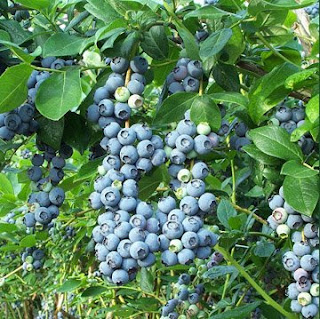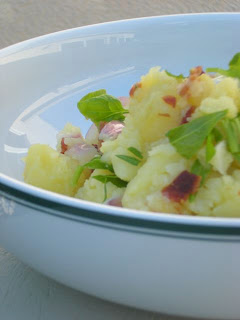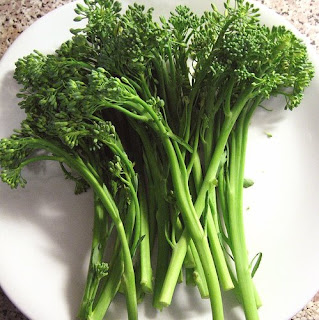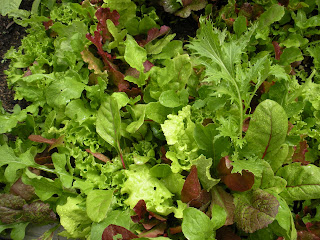It is my husband's birthday. We have now been together for 23 birthdays. The first one was just the two of us. For the second birthday we had a dog, then another dog and then a kid and then another kid and a couple of more dogs in between. In our house, you get to pick how you want to celebrate your birthday. Usually, the request is to have me make a favorite dinner and special dessert. Jimmy requested pasta with fresh vegetables. So I pulled some fava beans from my garden and purchased asparagus, nantes carrots, and spring onions which I adore from our local farm fresh market. There is a small window of opportunity to purchase these wonderful spring onions; they are completely underrated. Using them as a pizza topping or minced in salad adds an incredible flavor. Primavera means spring and spring it is right now when you visit your local market. You can make this pasta with any vegetable your heart desires, if fava beans are not available use sugar peas, or broccoli florets, be creative. If it is fresh you cannot go wrong. Plus it really is a wonderfully fast meal to make. Thank goodness, Jimmy didn't ask for lasagna, all I wanted to do today after the sweet rain was work in the garden...and I did!
Pasta Primavera

1/4 cup extra virgin olive oil (the good stuff)
2 garlic cloves, rough chop
2 tablespoons of butter
1 pound tagliatelle or any other wide noodle will be just fine
1 cup spring onions, sliced 1/4" wide (any sweet onion will work)
1 cup carrots, sliced thin (any kind, if they still have their tops, you can tell they are super fresh)
1/2 cup of fava beans
2 1/2 cups of asparagus, cut 1" diagonally
1 cup low sodium chicken broth (or vegetable broth for vegetarians)
1 tablespoon chopped fresh parsley or thyme (optional)
salt and pepper to taste, salt in the pasta water
romano pecorino or reggiano parmigano cheese to taste (whatever you've got in the fridge)
Boil 6 quarts of water for pasta.
In large skillet, heat pan and olive oil, add garlic, cook for 10 seconds, add butter until melted on medium flame. Add spring onions, cook until wilted about 3 minutes, add chicken broth. Add the salt and pepper to taste now. Cook for 3-5 minutes on medium high flame until about 1/3 of the mixture evaporates. Add vegetables with exception of fava beans stirring occasionally. Cook for 10 minutes on medium flame. Add fava beans and cook for 5 minutes more. Taste again. Do you need more salt and pepper? Turn off heat.
Boil pasta in salted water.
When pasta is al dente, drain and add to vegetable mixture. Cook on low flame and toss for 2 minutes. When done, transfer to pasta bowl and sprinkle with parsley or thyme. Serve with sprinkle of cheese on top. Serves 4-5.
I am reading Barbara Kingsolver's wonderful, wonderful book, Animal, Vegetable, Miracle. What an inspiration! Currently, out here in California, we are in a transition phase with fruit, lots of strawberries, which are the prelude to cherries, apricots, peaches and plums. Seems like the wait has been forever. So with strawberries and rhubarb in season, only one thing to make--a crisp! Here is the recipe for the easiest crisp on the planet. It has been adapted from Barbara's recipe in her extraordinary book. I still have the oranges in my garden, so I thought to add some fresh orange zest.
Strawberry Rhubarb Crisp

Preheat oven to 350 degrees.
3 cups strawberries, halved
3 cups rhubarb, chopped
1/2 cup honey
1 teaspoon vanilla
1 teaspoon orange or lemon zest (optional)
Mix the above together and place in an 8-by-8 inch non-greased pan.
1/2 cup flour
1/2 cup rolled oats
1/2 cup brown sugar
3/4 teaspoon cinnamon
1/2 teaspoon allspice
1/4 teaspoon nutmeg
1/3 cup butter, cut up in 1/4 inch cubes
Mix until crumbly, sprinkle over fruit mixture, and bake at 350 for about 40-50 minutes, until golden brown on top.
I am a purist, so I prefer to eat my crisp all by itself. My son likes a dollop of vanilla ice cream. Either way, enjoy! Serves 4-5.














